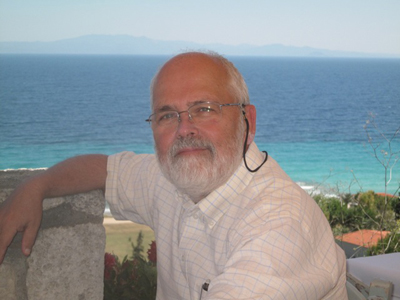Bruce G. Lindsay, 68, passed away at home, surrounded by his family, on the morning of May 5.
Bruce was holder of the Eberly Family Chair in Statistics at Penn State University, where he joined the faculty as an assistant professor in 1979 after completing a postdoctoral fellowship at Imperial College London. He spent his entire 36-year career at Penn State, where he was promoted to associate professor in 1985, professor in 1987, and distinguished professor in 1991. He served as the head of Penn State’s Department of Statistics from 2006 to 2012.
Bruce gave the prestigious Fisher Lecture at the 2010 Joint Statistical Meetings, a talk that highlighted his capacity for deep geometric insights and his uncanny knack for explaining difficult ideas simply. He was a fellow of the IMS and the ASA and an elected member of the ISI, as well as a past winner of a Guggenheim fellowship and a Humboldt Senior Scientist Research Award. Bruce’s first PhD student, Kathryn Roeder, was the winner of the 1997 COPSS Presidents’ Award, and all told Bruce served as the advisor to 31 PhD students over the course of his career.
Bruce made fundamental contributions to many areas of statistical theory, and along with his collaborators he applied these ideas to solve important problems arising in multiple fields, including longitudinal data, genomics, environmental data, machine learning, model selection, and massive datasets. His 1995 monograph on mixture models is one-of-a-kind, detailing his pioneering work on the theory of nonparametric maximum likelihood for mixture models and establishing a general geometric theory for the study of mixtures that he later extended in several ways. Bruce showed how his work in mixtures can also be generalized to semiparametric models such as the Rasch model and the measurement error model, increasing their flexibility. He developed a general framework for composite likelihood methods and extended the generalized method of moments to GEE models, providing a unified method for parameter inference and testing, as well as goodness of fit, which simplifies many intractable situations while also increasing efficiency. He advanced the theory of model assessment and distance-based estimation. And he devised a conditional score function useful for reducing nuisance parameter bias and extended this method to approximate conditional scores when exact scores do not exist. Deep and imaginative breakthroughs like these, which continue to have a profound effect on the theory and practice of statistics, characterized Bruce’s productive career.
Bruce was born in 1947 in The Dalles, Oregon. After graduating from The Dalles High School in 1965, he took his love of learning to the University of Oregon, where he earned a bachelor’s degree in mathematics in 1969. He intended to go on immediately to earn his doctoral degree, but the Vietnam War and its required military service intervened. Following a four-year stint in the Coast Guard, spent primarily in Petaluma, California, Bruce achieved his goal and earned a doctoral degree in biomathematics in 1978 from the University of Washington, with Norm Breslow as his advisor.
Soon after graduating, Bruce was offered a postdoctoral fellowship to spend a year at Imperial College London working with Sir David Cox. The small-town boy from The Dalles, Oregon, was thrilled. He, his first wife Teresa Goff, and their six-year-old son Dylan, packed up and headed off to soak up all that London and England had to offer. They came home a year later with their second son Camden on the way. Bruce had caught the bug for travel: Over the course of his career, he held temporary academic positions in Berlin, Victoria (BC), Auckland, Bath, Venice, Rome, Southampton, Glasgow, and Perugia along with several in the United States at Johns Hopkins, Cornell, Yale, and NC State. Bruce’s wife Laura Simon, whom he married in 1997, and their daughter Maia, share his love of travel, having accompanied him on all but a few of these ventures.
In addition to travelling and spending time with his family, Bruce loved hiking, reading, opera, and running (he ran five marathons). He was a life-long environmentalist who enjoyed walking or biking to work every day. Those of us who knew him personally and professionally recall him as a fabulous scientist, a wise mentor, a warm and humble human being, and a great friend.
A memorial fund has been established at Penn State to honor Bruce’s excellent scholarship and commitment to mentoring graduate students in statistics. If you are interested in making a memorial gift, please make your check out to Penn State University, 27 Old Main, University Park, PA 16802-1500, and write “Bruce Lindsay–Statistics” on the memo line. Any questions may be sent to David Hunter at dhunter@stat.psu.edu.
Written by David Hunter and Laura Simon from Penn State,
with help from Bruce’s students Kathryn Roeder, Annie Qu and Marianthi Markatou

Comments on “Obituary: Bruce Lindsay, 1947–2015”